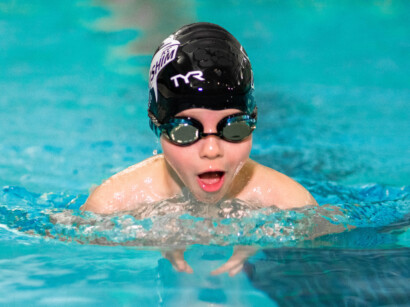Karishim Swim Team
We’re a year-round competitive team with a supportive community of athletes, providing a safe and friendly environment for swimmers to grow, make lasting friendships, and reach their full potential in the pool.
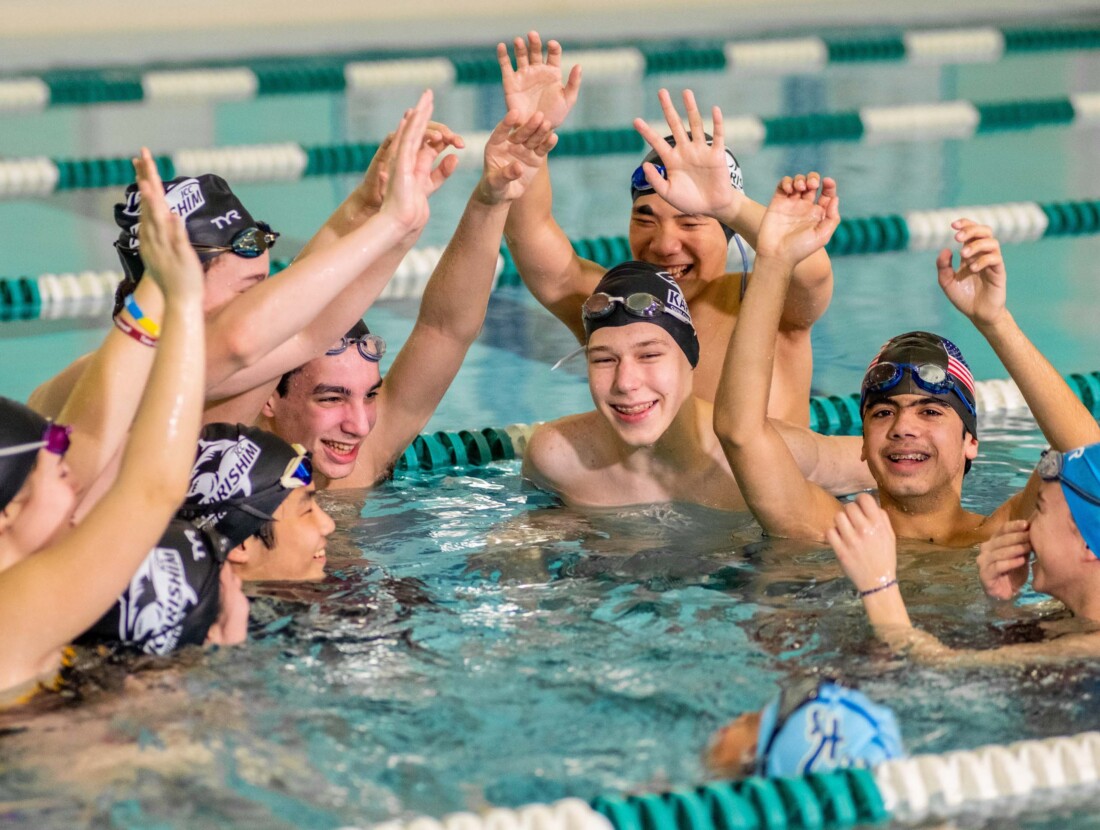
We’re About Camaraderie, Teamwork, and…Swimming!
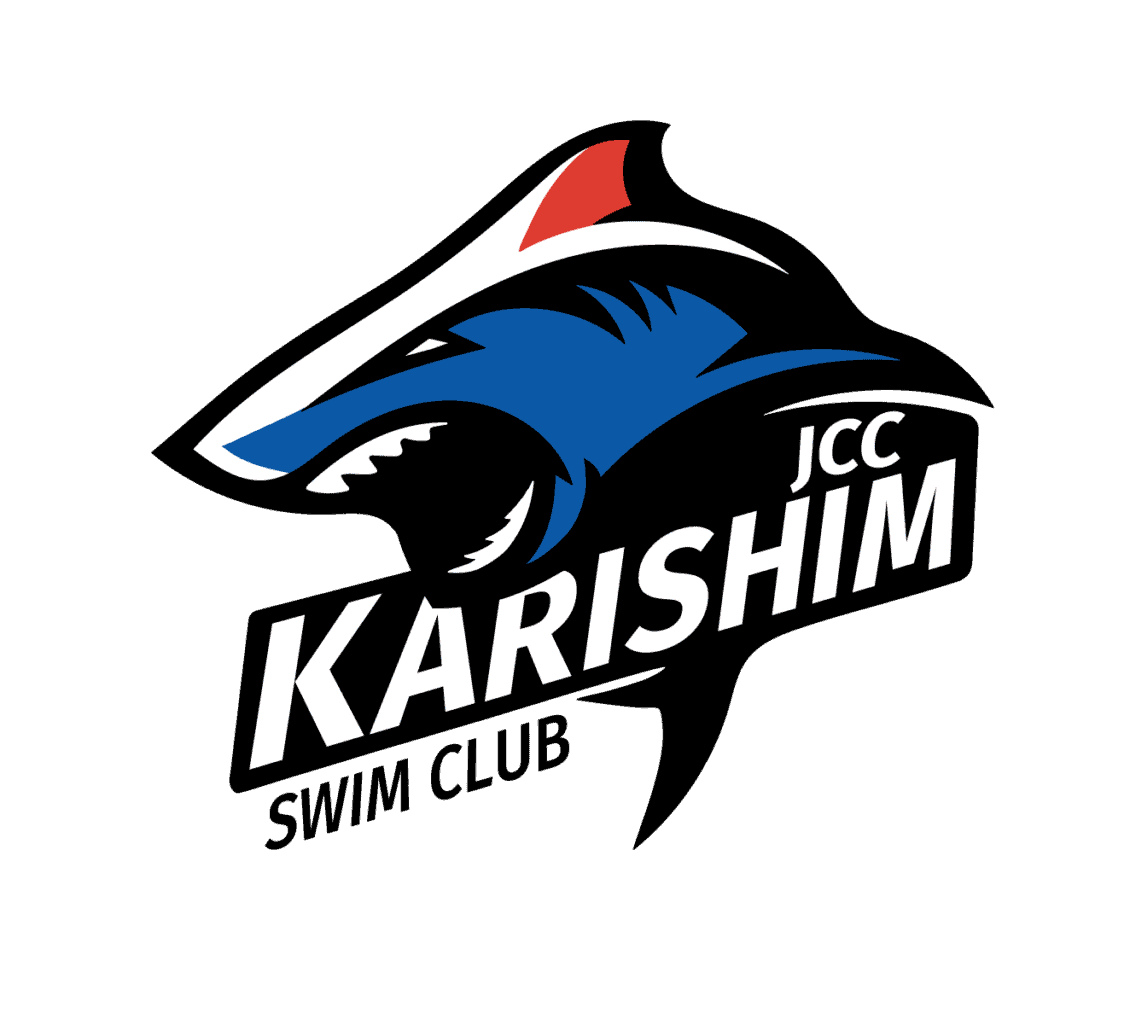
Dive into Karishim Swim Team! We’re a year-round competitive team for kids ages 6-18. Karishim (Sharks, in Hebrew) participates in USA Swimming-sanctioned meets under the supervision of certified coaches. Moreover, swim groups are led by experienced USA-certified swim coaches in a low coach-to-swimmer ratio setting. As a result, swimmers benefit from individualized attention and personalized training.
We meet multiple times a week (total number of required practices depend on team grouping), with in-pool and dryland practices held at the Leventhal-Sidman JCC. We offer swimmers the chance to participate in a wide range of local competitive programs each season.
The Karishim Swim Team is certified by USA Swimming with “Safe Sport” recognition, meaning that all of our coaches and a number of our athletes and parents have taken training regarding the recognition and prevention of abuse of all kinds.
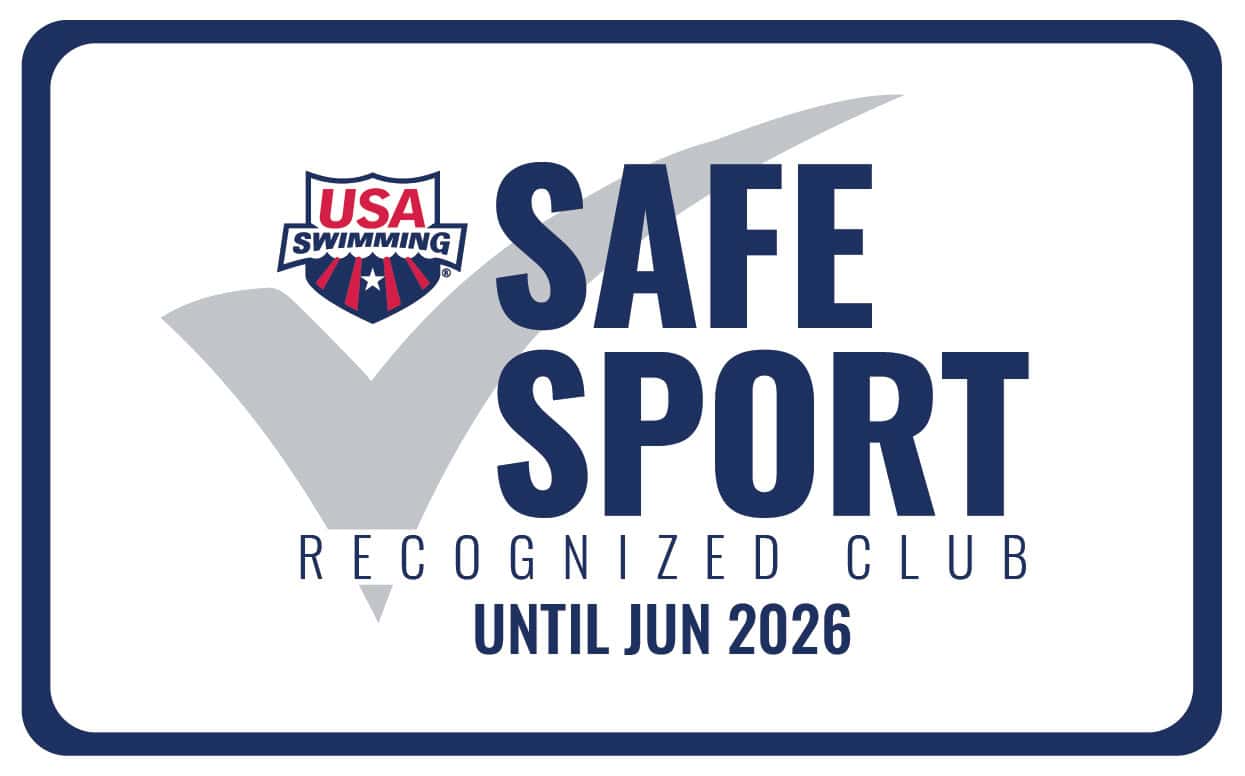
How It Works
Karishim Swim Club is skill-based, rather than age-based. Following a tryout, we place swimmers into a swim group based on their skill level.
- To schedule a tryout, call us at 617.558.6490, or email karishim@jccgb.org.
- A JCC membership is required to join the swim team.
Karishim Swim Team Groups
Dry Land Schedule
Junior Prep/Juniors: Tuesdays and Thursdays | 4–4:45pm
Age Group/Seniors: Mondays and Wednesdays | 5:15–6pm
Goals:
-
Invest in the swimmer’s stroke development, swim terminology knowledge, and confidence in the pool.
-
Foster an interest and love for swimming, and provide a glimpse into the community that surrounds it.
Practices will focus on head position and the kick used in all four of the competitive strokes, while focusing on intrinsic motivational development.
Time:
Monday–Thursday: 4–5pm
Goals:
-
Coaches begin to have a more critical and focused eye on swimmer’s technique.
-
Eliminating bad habits becomes a central focus.
-
Start to promote competitiveness in swimmers, creating personal goals and setting milestones.
Practices will focus on all four stroke developments, endurance sets, and all-out sprints. Coaches will work closely with swimmers to break bad habits and refine technique for all four strokes.
Time:
Monday–Thursday: 5–6:30pm
Goals:
-
Coaches now put more effort towards investing in the swimmer’s investment, setting true personal goals and striving to reach them.
-
Create social bonds that tie swimmers to the swimming community.
-
Increase competitive drive and push past limits to improve performance.
Practices will focus on developing race strategies (breakouts, turns, starts, and finishes), increasing endurance sets and all-out sprints.
Time:
Monday–Thursday: 5–6:30pm
Goals:
-
Swimmers develop a competent understanding of race strategy, cement their commitment to the team’s success, and hold themselves to a standard of competitiveness.
-
Swimmers will maintain high level of stroke technique for all four of the competitive strokes.
Practices will be more complex, focusing on developing a commitment to endurance training, speed training, and holding good technique throughout.
Time:
Monday–Thursday: 6:30–8:30pm
Friday: 4–6pm
Goals:
-
Demonstrate a passion for the sport and commitment to excellence.
-
Swimmers want to compete at the highest level possible.
-
Leadership skills, intrinsic motivation.
Practices will focus on training the group to reach national level meets, creating tighter team bonds, and denser practices.
Time:
Monday–Thursday: 6:30–8:30pm
Friday: 4–6pm
Hours & Rates
New Swimmers Rates
| Fall | Spring | Full Year | Apparel Fee | |
| Mini Karishim | $1,350 | $1000 | $2,250 | $85 (includes branded swim cap, bathing suit, and t-shirt) |
| Junior Prep | $1,450 | $1,050 | $2,400 | $85 (includes branded swim cap, bathing suit, and t-shirt) |
| Junior | $1,550 | $1,125 | $2,575 | $85 (includes branded swim cap, bathing suit, and t-shirt) |
| Age Group | $1,650 | $1,200 | $2,750 | $85 (includes branded swim cap, bathing suit, and t-shirt) |
| Senior Prep | $1,725 | $1,300 | $2,925 | $85 (includes branded swim cap, bathing suit, and t-shirt) |
| Senior | $1,850 | $1,500 | $3,250 | $85 (includes branded swim cap, bathing suit, and t-shirt) |
| High School | $1,700 | Not available | $2,600 | $85 (includes branded swim cap, bathing suit, and t-shirt) |
Get your family in on savings with $100 off when a sibling joins!
Returning Swimmers Rates
| Fall | Spring | Full Year | Apparel Fee | |
| Mini Karishim | $1,250 | $900 | $2,050 | $85 (includes branded swim cap, bathing suit, and t-shirt) |
| Junior Prep | $1,350 | $950 | $2,200 | $85 (includes branded swim cap, bathing suit, and t-shirt) |
| Junior | $1,450 | $1,025 | $2,375 | $85 (includes branded swim cap, bathing suit, and t-shirt) |
| Age Group | $1,550 | $1,100 | $2,550 | $85 (includes branded swim cap, bathing suit, and t-shirt) |
| Senior Prep | $1,625 | $1,200 | $2,725 | $85 (includes branded swim cap, bathing suit, and t-shirt) |
| Senior | $1,750 | $1,300 | $2,950 | $85 (includes branded swim cap, bathing suit, and t-shirt) |
| High School | $1,500 | Not available | $2,400 | $85 (includes branded swim cap, bathing suit, and t-shirt) |
Get your family in on savings with $100 off when a sibling joins!
Indoor Pool
📍 Lower Level
✅ JCC Members, Master’s Swim, & Swim Lessons Participants
For the most up-to-date Indoor Pool hours, please consult our schedule below:
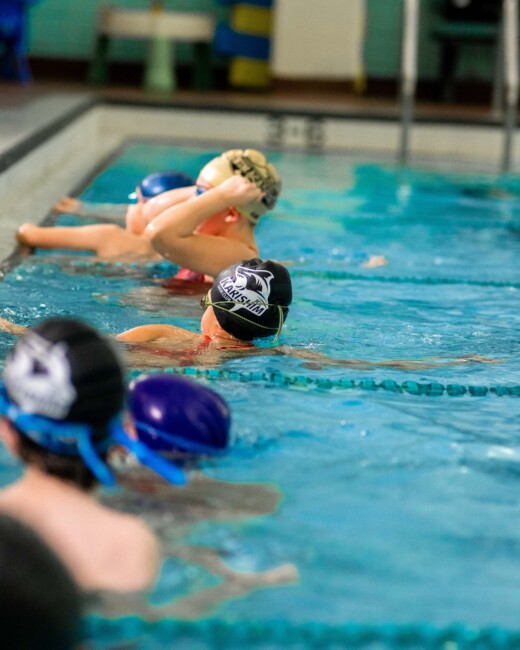
Upcoming Classes
View All ClassesKarishim – Full Year – Mini Karishim
Karishim – Full Year – Junior Prep
Karishim – Full Year – Junior
Karishim – Full Year – Age Group
Karishim – Full Year – Senior Prep
Karishim – Full Year – Senior
Make A Splash at All-Star Swim Camp!
The All-Star Swim Camp at JCC Greater Boston is a week-long intensive camp for swimmers ages 7-15. Designed for those already on a swim or developmental team, the camp focuses on refining competitive strokes, starts, and turns under the guidance of experienced instructors, including head coach Lauren Gale. Participants will receive personalized coaching to help reach their full swimming potential. The camp runs in late August, and a tryout is required before registration.
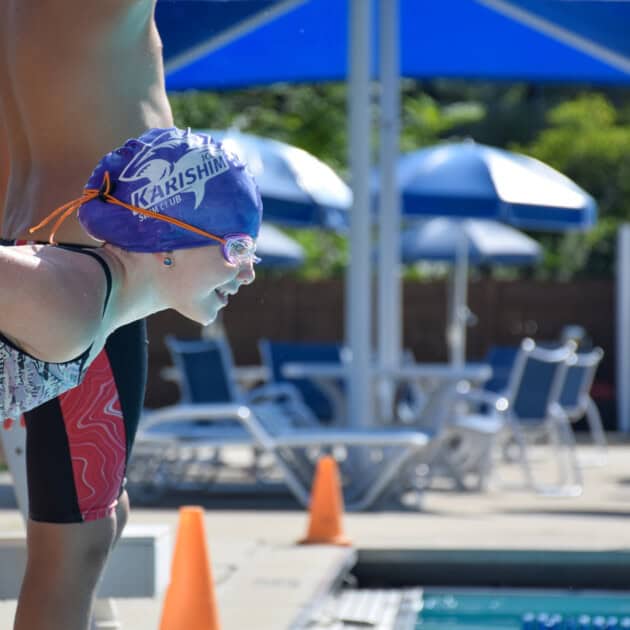
We're Here to Help
Safe Sport Policies & Guidelines
Minor Athlete Abuse Protection Policies
Best Practice Guidelines
The following Best Practice Guidelines are strongly recommended for all USA Swimming members.
- Parents should be encouraged to appropriately support their children’s swimming experience.
- All swimming practices should be open to observation by parents.
- Coaches should not initiate contact with or accept supervisory responsibility for athletes outside club programs and activities.
- When only one athlete and one coach travel to a competition, at the competition the coach and athlete should attempt to establish a “buddy” club to associate with during the competition and when away from the venue.
- Relationships of a peer-to-peer nature with any athletes should be avoided. For example, coaches should avoid sharing their own personal problems with athletes.
- Coaches and other non-athlete adult members should avoid horseplay and roughhousing with athletes.
- When a coach touches an athlete as part of instruction, the coach should do so in direct view of others and inform the athlete of what he/she is doing prior to the initial contact. Touching athletes should be minimized outside the boundaries of what is considered normal instruction. Appropriate interaction would include high fives, fist bumps, side-to-side hugs and handshakes.
- Coaches should avoid having athletes as their favorites. They should also avoid creating a situation that could be perceived as them having favorites.
- Gift-giving, providing special favors or showing favoritism to individual athletes is strongly discouraged.
Karishim Grievance Procedure
The Karishim Swim Club Grievance Procedure provides swimmers, parents, coaches, club leaders and employees a system to address and report grievances in a productive, systematic way. Following these Procedures provides the appropriate parties a means to properly investigate, intervene, and take disciplinary action when needed.
WHERE TO REPORT:
For issues dealing with sexual misconduct, sexual harassment and/or sexually explicit or inappropriate communication through social media:
- S. Center for SafeSport: 833-5US-SAFE (587-7233) or https://safesport.i-sight.com/portal
For issues dealing with physical abuse, emotional abuse, criminal charges and the use, sale or distribution of illegal drugs:
- USA Swimming Safe Sport: safesport@usaswimming.org or https://fs22.formsite.com/usaswimming/form10/index.html
For issues dealing with known or suspected child abuse:
- Child-at-Risk-Hotline: 800-792-5200
For issues dealing with peer-to-peer bullying, coach-athlete bullying, parent issues, violations of the Karishim Swim Club Code of Conduct and violations of the Minor Athlete Abuse Prevention Policy.
- These issues are handled at the club level following the procedures outlined below.
WHOM TO NOTIFY OF A GRIEVANCE (Chain of Command)
Regarding the Conduct of a Swimmer – Contact the swimmer’s coach.
- Should a parent or swimmer feel another swimmer’s conduct is inappropriate or violates the Karishim Swim Club Code of Conduct, the parent/swimmer should discuss these concerns with the coach of the swimmer responsible for the violation (Responsible Coach). This complaint should be made in person or in Coaches will ensure the Karishim Swim Club head coach is notified of the complaint and will participate in assessing behavior.
Regarding the Conduct of an Assistant or Age Group Coach – Contact the Head Coach
- Should a parent or swimmer feel an Assistant or Age Group Coach’s conduct is inappropriate or in violation of any Club policies or procedures, the parent/swimmer should notify the Head Coach of this This complaint should be made in person or in writing. The Head Coach will ensure that the Jewish Community Center of Greater Boston club owner is notified of the complaint and will participate in assessing behavior.
Regarding Conduct of Head Coach – Notify the Jewish Community Centers of Greater Boston – club owner
- Should a parent or swimmer feel the Head Coach’s conduct is inappropriate or violates any Club policies or procedures, the parent/swimmer should notify Jewish Community Centers of Greater Boston of this violation.
Regarding Parent or Official Conduct – Notify the Head Coach
- Should a parent or swimmer feel another Karishim Swim Club parent’s or an official’s conduct is inappropriate or violates any Club policies or procedures, the parent/ swimmer should notify the Head Coach of this violation in person or in writing.
Note: With the exception of issues which immediately affect the health and safety of swimmers, all matters should be discussed before or after a coaching session, as coaches should not be expected to deal with issues during water time.
HOW GRIEVANCES WILL BE HANDLED
The Head Coach has the authority to impose penalties for infractions of the Karishim Swim Club, Athlete, Parent and Coach Codes of Conduct or any behavior(s) they deem not conducive to the best interests of the Club or other swimmers. Consequences are at the sole discretion of the coaches and may include, but aren’t limited to, verbal warnings, dismissal from practice, contacting parents, temporary suspension from club activities and expulsion. Involved parties will be informed of the processes and range of potential consequences. The U.S. Center for SafeSport, USA Swimming and local law enforcement (if applicable) will be contacted within 24 hours if a coach, parent, or swimmer violates the SafeSport Code for the U.S. Olympic and Paralympic Movements, the USA Swimming Code of Conduct, Athlete Protection Policy, or local laws.
- Gathering Information: The appropriate individuals will contact the person who filed the grievance, and the person against whom the grievance is being filed, to ask questions about what happened. In addition, other witnesses may be contacted for more information. All information will be recorded on the Karishim Swim Club grievance procedure form.
- Assessing Behavior: The behavior of the person(s) against which the grievance was brought, will be assessed using club policies and facility rules, USA Swimming Code of Conduct, USA Swimming Safe Sport policies, as well as applicable local and state laws.
- Consequences will be given and disciplinary action will be taken, if appropriate. These consequences and disciplinary actions will be decided using the following general guidelines:
- Nature of the misconduct
- Severity of the misconduct
- Prior disciplinary actions
- Adverse effect of the misconduct
- Application of the Code of Conduct
Electronic Communication Policy
Electronic Communication Policy of the Karishim Swim Club
PURPOSE
The Karishim Swim Club recognizes the prevalence of electronic communication and social media in today’s world. Many of our swimmers use these means as their primary method of communication. While the Club acknowledges the value of these methods of communication, the Club also realizes that there are associated risks that must be considered when adults use these methods to communicate with minors.
All communications between a coach or other adult and an athlete must be professional in nature and for the purpose of communicating information about team activities. All communication must be observable and interruptible. All communication must have a parent, guardian, or another coach present/included. The content and intent of all electronic communications must adhere to the USA Swimming Code of Conduct regarding Athlete Protection. For example, as with any communication with an athlete, electronic communication should not contain or relate to any of the following:
- drugs or alcohol use
- sexually oriented conversation
- sexually explicit language; sexual activity
- the adult’s personal life , social activities, relationship or family issues, or personal problems
- inappropriate or sexually explicit pictures
Note: Any communication concerning an athlete’s personal life, social activities, relationship or family issues or personal problems must be transparent, accessible and professional. Whether one is an athlete, coach, board member or parent, the guiding principle to always use in communication is to ask: “Is this communication something that someone else would find appropriate or acceptable in a face‐to‐face meeting?” or “Is this something you would be comfortable saying out loud to the intended recipient of your communication in front of the intended recipient’s parents, the coaching staff, the board, or other athletes?” With respect to electronic communications, a simple test that can be used in most cases is whether the electronic communication with swimmers is Transparent, Accessible and Professional.
- Transparent:
- All electronic communication between coaches and athletes should be transparent. Your communication should not only be clear and direct, but also free of hidden meanings, innuendo and expectations.
- Accessible:
- All electronic communication between coaches and athletes should be considered a matter of record and part of the Club’s records. Whenever possible, include another coach or parent in the communication so that there is no question regarding accessibility.
- Professional:
- All electronic communication between a coach and an athlete should be conducted professionally as a representative of the Club. This includes word choices, tone, grammar, and subject matter that model the standards and integrity of a staff member. If your communication meets all three of the T.A.P. criteria, then it is likely your method of communication with athletes will be appropriate.
FACEBOOK, INSTAGRAM, TWITTER, BLOGS, AND SIMILAR SITES
Coaches may have personal Facebook (or other social media site) pages, but they are not permitted to have any athlete member of the Club join their personal page as a “friend.” A coach should not accept any “friend” request from an athlete. In addition, the coach should remind the athlete that this is not permitted. Coaches and athletes are not permitted to “private message” each other through Facebook. Coaches and athletes are not permitted to “instant message” each other through Facebook chat or other IM method. The Club has an official Facebook page that athletes and their parents can “friend” for information and updates on team‐related matters.
Coaches are encouraged to set their pages to “private” to prevent athletes from accessing the coach’s personal information. The club team may have a team Facebook, Instagram, Twitter, and/or similar account, but this must be set to “private” to prevent non athletes and parents from accessing pictures and swimmer information. Swimmers should not be “tagged”, and any identifying information should be excluded (such as last names, addresses, etc).
TEXTING
Subject to the general guidelines mentioned above, texting is allowed between coaches and athletes during the hours from 8am until 8pm. Texting only shall be used for the purpose of communicating information directly related to team activities. When communicating with an athlete through text, a parent, guardian, or another coach must also be copied.
Athletes and coaches may use email to communicate between the hours of 8am and 8pm. When communicating with an athlete through email, a parent, guardian, or another coach must also be copied.
REQUEST TO DISCONTINUE ALL ELECTRONIC COMMUNICATIONS
The parents or guardians of an athlete may request in writing that their child not be contacted by coaches through any form of electronic communication.
Action Plan to Address Bullying
Action Plan of the Karishim Swim Club to Address Bullying
PURPOSE
Bullying of any kind is unacceptable at Karishim Swim Club and will not be tolerated. Bullying is counterproductive to team spirit and can be devastating to a victim. Karishim Swim Club is committed to providing a safe, caring and friendly environment for all of our members. If bullying does occur, all athletes and parents should know that incidents will be dealt with promptly and effectively. Anyone who knows that bullying is happening is expected to tell a coach, board member or athlete/mentor.
Objectives of the Club’s Bullying Policy and Action Plan:
- To make it clear that the Club will not tolerate bullying in any
- To define bullying and give all board members, coaches, parents and swimmers a good understanding of what bullying is.
- To make it known to all parents, swimmers and coaching staff that there is a policy and protocol should any bullying issues arise.
- To make how to report bullying clear and
- To spread the word that Karishim Swim Club takes bullying seriously and that all swimmers and parents can be assured that they will be supported when bullying is reported.
WHAT IS BULLYING?
Generally, bullying is the use of aggression, whether intentional or not, which hurts another person. Bullying results in pain and distress.
Bullying is the severe or repeated use, regardless of when or where it may occur, by one or more USA Swimming members of an oral, written, electronic or technological expression, image, sound, data or intelligence of any nature (regardless of the method of transmission) , or a physical act or gesture , or any combination thereof, directed at any other member or Participating Non-Member that to a reasonably objective person has the effect of causing
physical or emotional harm to the other member or damage to the other member’s property;
- Placing the other member in reasonable fear of harm to himself/herself or of damage to his/her property;
- Creating a hostile environment for the other member at any USA Swimming activity;
- Infringing on the rights of the other member at any USA Swimming activity; or
- Materially and substantially disrupting the training process or the orderly operation of any USA Swimming activity (which for the purposes of this section shall include, without limitation, practices, workouts and other events of a member club or LSC).
REPORTING PROCEDURE
An athlete who feels that he or she has been bullied is asked to do one or more of the following things:
- Talk to your parents;
- Talk to a Club Coach, Board Member, or other designated individual;
- Write a letter or email to the Club Coach, Board Member, or other designated individual;
- Make a report to the USA Swimming Safe Sport staff.
There is no express time limit for initiating a complaint under this procedure, but every effort should be made to bring the complaint to the attention of the appropriate club leadership as soon as possible to make sure that memories are fresh and behavior can be accurately recalled and the bullying behavior can be stopped as soon as possible.
HOW WE HANDLE BULLYING
If bullying is occurring during team-related activities, we STOP BULLYING ON THE SPOT using the following steps:
- Intervene immediately. It is okay to get another adult to help.
- Separate the kids involved.
- Make sure everyone is safe.
- Meet any immediate medical or mental health needs.
- Stay calm. Reassure the kids involved, including bystanders.
- Model respectful behavior when you intervene.
If bullying is occurring at our club or it is reported to be occurring at our club, we address the bullying by FINDING OUT WHAT HAPPENED and SUPPORTING THE KIDS INVOLVED using the following approach:
FINDING OUT WHAT HAPPENED
First, we get the facts.
- Keep all the involved children
- Get the story from several sources, both adults and
- Listen without
- Don’t call the act “bullying” while you are trying to understand
- It may be difficult to get the whole story, especially if multiple athletes are involved or the bullying involves social bullying or cyber bullying. Collect all available
Then, we determine if it’s bullying. There are many behaviors that look like bullying but require different approaches. It is important to determine whether the situation is bullying or something else.
- Review the USA Swimming definition of bullying;
- To determine if the behavior is bullying or something else, consider the following questions:
- What is the history between the kids involved?
- Have there been past conflicts?
- Is there a power imbalance? Remember that a power imbalance is not limited to physical It is sometimes not easily recognized. If the targeted child feels like there is a power imbalance, there probably is.
- Has this happened before? Is the child worried it will happen again?
- Remember that it may not matter “who started ” Some kids who are bullied may be seen as annoying or provoking, but this does not excuse the bullying behavior.
- Once you have determined if the situation is bullying, support all of the kids involved.
SUPPORTING THE KIDS INVOLVED
Support the kids who are being bullied
- Listen and focus on the Learn what’s been going on and show you want to help. Assure the child that bullying is not their fault.
- Work together to resolve the situation and protect the bullied child. The child, parents, and fellow team members and coaches may all have valuable It may help to:
- Ask the child being bullied what can be done to make him or her feel safe. Remember that changes to routine should be minimized. He or she is not at fault and should not be singled out. For example, consider rearranging lane assignments for If bigger moves are necessary, such as switching practice groups, the child who is bullied should not be forced to change.
- Develop a game plan. Maintain open communication between the Club and parents. Discuss the steps that will be taken and how bullying will be addressed going forward.
- Be persistent. Bullying may not end overnight. Commit to making it stop and consistently support the bullied child.
ADDRESS BULLYING BEHAVIOR
- Make sure the child knows what the problem behavior is. Young people who bully must learn their behavior is wrong and harms others.
- Show kids that bullying is taken seriously. Calmly tell the child that bullying will not be tolerated. Model respectful behavior when addressing the problem.
- Work with the child to understand some of the reasons he or she bullied. For example:
- Sometimes children bully to fit in or just to make fun of someone is a little different from them. In other words, there may be some insecurity involved.
- Other times kids act out because something else—issues at home, abuse, stress—is going on in their lives. They also may have been bullied. These kids may be in need of additional support.
- Involve the kid who bullied in making amends or repairing the situation. The goal is to help them see how their actions affect others. For example, the child can:
- Write a letter apologizing to the athlete who was bullied.
- Do a good deed for the person who was bullied, for the Club, or for others in your community.
- Clean up, repair, or pay for any property they damaged.
- Avoid strategies that don’t work or have negative consequences:
-
- Zero tolerance or “three strikes, you’re out” strategies don’t work. Suspending or removing from the team swimmers who bully does not reduce bullying behavior. Swimmers may be less likely to report and address bullying if suspension or getting kicked off the team is the consequence.
- Conflict resolution and peer mediation don’t work for bullying. Bullying is not a conflict between people of equal power who share equal blame. Facing those who have bullied may further upset kids who have been bullied.
-
- Follow-up. After the bullying issue is resolved, continue finding ways to help the child who bullied to understand how what they do affects other people. For example, praise acts of kindness or talk about what it means to be a good teammate.
SUPPORT BYSTANDERS WHO WITNESS BULLYING
Every day, kids witness bullying. They want to help, but don’t know how. Fortunately, there are a few simple, safe ways that athletes can help stop bullying when they see it happening.
-
- Be a friend to the person being bullied;
- Tell a trusted adult – your parent, coach, or club board member;
- Help the kid being bullied get away from the Create a distraction, focus the attention on something else, or offer a way for the target to get out of the situation. “Let’s go, practice is about to start.”
- Set a good example by not bullying
- Don’t give the bully an audience. Bullies are encouraged by the attention they get from bystanders. If you do nothing else, just walk away.
Karishim Photography Policies
KARISHIM SWIM CLUB PHOTOGRAPHY POLICIES
The publishing of a photograph of swimmer under 18 either on a notice board or in a published article of swimming competitions (“publication”) should only be done with parents’ consent per the attached form.
All photographs must observe generally accepted standards of decency in particular:
- Action shots should be a celebration of the sporting activity and not a sexualized image in a sporting context.
- Action shots should not be taken or retained where the photograph reveals a torn or displaced swimsuit.
- Photographs should not be taken from behind swimming blocks at the start of a race or exhibit a child climbing out of the swimming.
- Photographs should not be taken in locker‐rooms or bathrooms.
Locker Room Policy
Karishim Swim Club Locker Room Monitoring Policy
PURPOSE
The following guidelines are designed to maintain personal privacy as well as to reduce the risk of misconduct in locker rooms and changing areas.
FACILITIES
The following is a description of our practice and competition facilities to allow athletes and their families to plan their use throughout their time on Karishim Swim Club. These facilities have public locker room / restrooms. The use of public restrooms is intended for parents, visitors, students, staff of the schools and the general public. Such access means there are multiple groups utilizing the space simultaneously creating need for Karishim Swim Club athletes to be respectful of others privacy. Karishim Swim Club athletes must be diligent in monitoring the area to protect all Karishim Swim Club team mates from any inappropriate conduct.
The purpose of this policy is to protect our athletes, coaches and parents. We respectfully request all Karishim Swim Club parents review this policy with your athletes. Safety is always our top priority. Karishim Swim Club believes that constant monitoring inside of all locker rooms and changing areas could be the most effective way to prevent problems, but it believes more strongly that our swimmers have a track record of behaving well and that constant monitoring
would make swimmers uncomfortable and may even place our staff or volunteers at risk for unwarranted suspicion.
KARISHIM SWIM CLUB SWIMMERS PRACTICE LOCKER ROOM POLICY
- No athlete may leave practice without permission from a coach.
- No athlete should be in the locker room alone at any time unless absolutely necessary (excluding COVID-19 directives)
- Athletes should read and adhere to Karishim Swim Club Locker Room policies.
- Athletes must be aware of the other patrons utilizing the locker room and report to the coach immediately any concerning or in appropriate behavior.
- Athletes should shower and dress quickly avoiding time spent without cover in front of mirrors or in front of others.
- Parents should not enter the locker room unless absolutely necessary and then with conditions. (See below for Policy Considerations.)
Karishim Swim Club Expectations of Character
Karishim Swim Club athletes understand personal accountability and the expectation of being a Karishim Swim Club member, is always about maintaining a high level of personal character. The use of poor language, inappropriate discussions and general rough housing in the locker room is unacceptable. Please notify a coach of any violations.
MONITORING
General Policy Considerations
Coaches and staff make every effort to recognize when an
athlete goes to the locker room or changing area during practice or competition, and if they do not return in a timely fashion, we will check on the athlete’s whereabouts. We discourage parents from entering locker rooms and changing areas unless it is truly necessary. In those
instances, it should only be a same-sex parent. If this is necessary, parents should let the coach or administrator know about this in advance.
If an athlete needs assistance with his or her uniform or gear (for example, a child under the age of eight), or an athlete’s disability warrants assistance, then we ask that parents let the coach know beforehand that he or she will be helping the athlete. In those instances, it should only be a same-sex parent. An opposite-sex parent needs to ask another parent to check on his/her child. If this is not an option, then the parent should let the coach know about this in advance, allow the coach to announce him or herself and allow swimmers to gather things to maintain their privacy. Following this announcement and a brief period, the coach and opposite sex parent
can enter the locker room but only for the limited, specific purpose (and time needed) for which they entered.
Karishim Swim Club has staggered practices, with different groups arriving and departing throughout the practice sessions. The head coach, along with the other Karishim Swim Club staff, will conduct a sweep of the locker rooms and changing areas before athletes arrive. While we do not post [staff, coach, parent, other adult] inside or at the doors of the locker rooms and changing areas, we do make occasional sweeps of these areas. [Staff, coach, parent, other adult] conduct these sweeps, with women checking on female locker rooms, and men checking on male locker rooms.
Coaches make every effort to recognize when an athlete goes to the locker room or changing area during practice and, if they do not return in a timely fashion, we will check on the athlete’s whereabouts. A swimmer leaving the water for the locker room or changing area must ask the coach first. It is impossible to record these instances, but this request allows for a better awareness.
USE OF CELL PHONES AND OTHER MOBILE RECORDING DEVICES
Cell phones and other mobile devices with recording capabilities, including voice recording, still cameras and video cameras increase the risk for different forms of misconduct in locker rooms and changing areas. The USA Swimming Athlete Protection Policies prohibit the use of such devices in the locker room or other changing area: Article 305.3 Use of audio or visual recording devices, including a cell phone camera, is not allowed in changing areas, rest rooms or locker rooms.
MISCONDUCT WARNING POLICY
First misconduct – the athlete will be given a verbal warning and parents will be notified
Second misconduct – the athlete may lose usage of the locker room for a week
Third misconduct – the athlete loses all privileges of using the facility’s locker room
Team Travel Documents
If you need more information, check out the official USA Swimming Karishim page!









